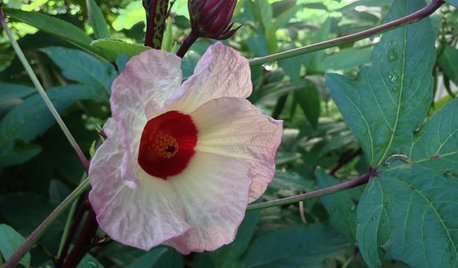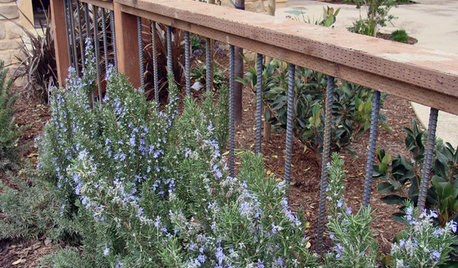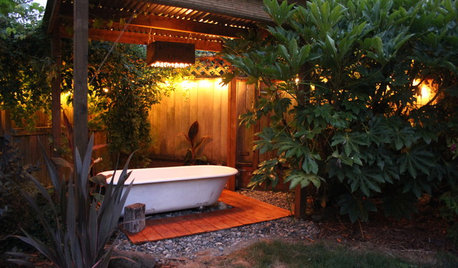Florida weave tomato staking
jayreynolds
19 years ago
Related Stories

EDIBLE GARDENSSummer Crops: How to Grow Tomatoes
Plant tomato seedlings in spring for one of the best tastes of summer, fresh from your backyard
Full Story
MOST POPULARThe Unexpected Color That Goes With Everything
Move over, beige. Green is staking its claim as the freshest neutral around
Full Story
GARDENING GUIDESCalifornia Gardener's June Checklist
Update your hydrangeas, catch up on tomatoes and more ways to enjoy your California garden in June
Full Story
EDIBLE GARDENSGreat Design Plant: Roselle Tantalizes With Beauty and Flavor
Call it a fruit or a flower or a sweet vegetable. This hibiscus is so lovely, all that matters is calling it forth in your garden
Full Story
INDUSTRIAL STYLE9 Imaginative Ideas for Industrial Rebar in the Garden
Inexpensive and unexpected, steel bar from any big-box hardware store can give your landscape an edgier look
Full Story
LIFESlow Living 101: Tips for Turning Off the Chaos
It may feel as though you're too busy to slow down and enjoy life. But even little changes can have a big effect
Full Story
LANDSCAPE DESIGNWhat Kind of Gardener Are You? Find Your Archetype
Pick from our descriptions to create a garden that matches your personality and tells your story
Full Story
FARM YOUR YARD10 Easy Edibles to Grow in Containers
These herbs, vegetables and fruits are just as happy in a pot as they are in the ground
Full Story
GARDENING AND LANDSCAPINGSee a Soothing Backyard Bathhouse Born From a Salvaged Tub
Creative thinking and DIY skills give a Portland couple a pergola-covered 'hot tub' under the stars
Full Story
PETS6 Ways to Help Your Dog and Landscape Play Nicely Together
Keep your prized plantings intact and your dog happy too, with this wisdom from an expert gardener and dog guardian
Full StorySponsored






victorias_garden
ohiorganic
Related Professionals
Carlisle Landscape Architects & Landscape Designers · Erie Landscape Architects & Landscape Designers · Frisco Landscape Contractors · Addison Landscape Contractors · Fuquay-Varina Landscape Contractors · Mount Kisco Landscape Contractors · Pahrump Landscape Contractors · Pomona Landscape Contractors · Quincy Landscape Contractors · Whitehall Landscape Contractors · Yuba City Landscape Contractors · Tyngsboro Landscape Contractors · Lockhart Solar Energy Systems · Bell Gardens Solar Energy Systems · Peabody Solar Energy Systemskaramazov
imtoobusy
jayreynoldsOriginal Author
Violet_Z6
rjm_1403_yahoo_com
weedlady
tommyk